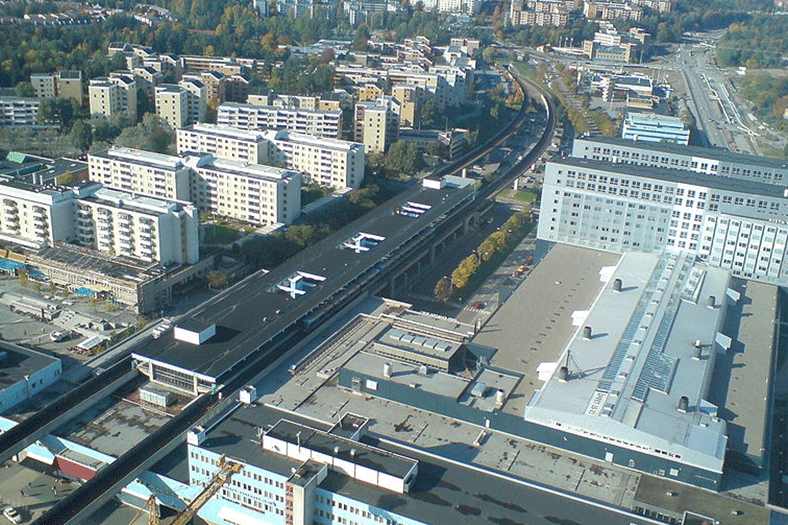An Elixir of Smartness

Five years ago “Smart Cities” was a buzzword, where do we stand today, are we smart enough, are we there yet?
Five years ago the Smart City concept was initiated, an idea was generalized that in a given time period we will have 100 new cities with high-rises, new bridges, metro connectivity Et al. Five years down the pipeline we have become reasonably smarter and hence a question arises, where are these smart cities. And the city that we live in, what about them?
In a country like India which has a good deal of existing infrastructure, the idea of Smart City dawned upon as a concept which will completely revamp the situation in a matter of five years. This did not happen and everyone is sulking. However it takes a bit of insight to understand how things work. First and foremost the Smart City is not about automation alone. When the Smart City initiative was incepted a lot of tech companies joined the bandwagon. Home automation became the key word. Much of the populace thought everything will now be executed at a touch of a button or will be app controlled. In a way they were right but it’s not the complete truth.
Prasanna Desai, Urban Designer, Educationist and Principal at PDA (Prasanna Desai Architects) who has been involved in the Smart City Initiative points out “The initiative is all about creating healthy, hygienic and habitable neighbourhood, which will lead to a smart city. This in turn will also lead to quantitative, economic and environmental changes. When the initiative of 100 smart cities were announced, there was an impression that 100 new cities will come into existence. 100 new cities dominated with high-rises like the existing metro cities. This thought process in itself is a fallacy.”
India as a nation has been consistently working towards realising world class roads, highways and infrastructure. The process has been ongoing. “Initiatives have been undertaken to improve the urban and rural infrastructure earlier too, the have been executed from time to time irrespective of the political outfit in power. Earlier, it was JNNURM (Jawaharlal Nehru National Urban Renewal Mission), then there was Slum Rehabilitation Project under BSUP (Basic Services for the Urban Poor) scheme. The schemes and plans have been there in the past but what the Smart Cities concept has done it has brought cities into limelight and the whole country is talking about it. That credit goes to Smart City initiative. At the end of the day, smart cities are not about technology alone, it depends upon the will of the people and hence people need to be aware of it.”
Praveen Mysore, Director, Cities and Infrastructure, India, Dassault Systemes says “Every smart city needs to be viewed and planned as living entities, where every element and every citizen is part of a whole. A city cannot be built smart until and unless citizens participate in the transformation. Studies of the interaction between people and systems have revealed patterns that are standard. If we analyze the patterns and interactions between people and systems in domains such as transportation, public amenities, waste disposal etc. We can develop cities that are robust and are also highly efficient and sustainable.”
The awareness was in place but it was construed on the ideas vetted by our global minds. Ideas which were sold to us by the individual leaders during elections. It would be wrong to say that nothing has happened, but the rate at which it has happened has us a bit disillusioned.
Under the Smart City Mission and there is a programme called CITIIS (City Investments to Innovate Integrate and Sustain) which is currently involved in fifteen different projects across India. PDA (Prasanna Desai Architects) is involved in two such projects “CITIIS,” says Desai“is the main component of the ‘Supporting Smart Cities Mission for a more Inclusive and Sustainable Urban Development in India’ launched by the Ministry of Housing and Urban Affairs in 2018. I am associated with two.One of our projects involves upgrading 25 villages in the Amaravati district of Andhra Pradesh. We are upgrading the quality of the health centers, Anganwadis, primary and secondary schools. Likewise we are also involved in a project based in Visakhapatnam for up gradation of 150 municipal schools.”
One may wonder what is so smart about the aforementioned projects but the fact is, in India alone there are different versions of the nation which thrive. What we comprehended was a part of story much of which is limited to the urban landscape. The rural topography has to be managed in a different way. Today as a part of the Smart City initiative’s bottoms up approach an attempt to address the complex challenge India poses is underway. But it will take time. Societies, colonies, mohallas one at a time approach and finally the city.
Urban Planner Arijit Sen points out “Indian cities are inherently complex. It is this complexity that needs to be appreciated, understood and celebrated – individually as well as holistically. The Smart Cities behoves upon us, city planners on a mission to awaken, energise and reinvigorate the glorious layers of our cities into responsive, adaptive, accessible places for all.”
As we head towards realisation of the Smart Cities home automation trends will continue to dominate the urban landscape. In this regard, Sumit Padmakar Joshi, CEO of Signify Innovations India Limited says “The adoption of home automation in India is still at a nascent stage but steadily increasing, owing to growing internet penetration and availability of a wide range of smart home products in the country. Tech-savvy consumers nowadays prefer owning homes that are equipped with connected gadgets like lighting, consumer durables and home automation that can complement their tech-enabled lifestyle.”
Even as we realise the ultimate truth the government also needs to have a mechanism in place to address the blockages which come in the way. Four years into the mission-as on July 25, 2019-only 933 projects (18 per cent) have been completed, at a cost of Rs 15,504 crore. Work orders have been issued for 1,931 projects (37 per cent), worth Rs 75,626 crore, while tenders have been issued for 827 projects (16 per cent), worth Rs 45,315 crore.
In a democracy, to concoct an elixir of smartness is a tough ask, for it to fructify honesty, integrity and a non-corrupt political will is absolutely necessary. Couple that with a precise know-how and citizen’s participation, we are perhaps on the right path. Our intellect and patience will be put to test. It will be time for us to remember our childhood story of how the tortoise won the race.
Cookie Consent
We use cookies to personalize your experience. By continuing to visit this website you agree to our Terms & Conditions, Privacy Policy and Cookie Policy.









